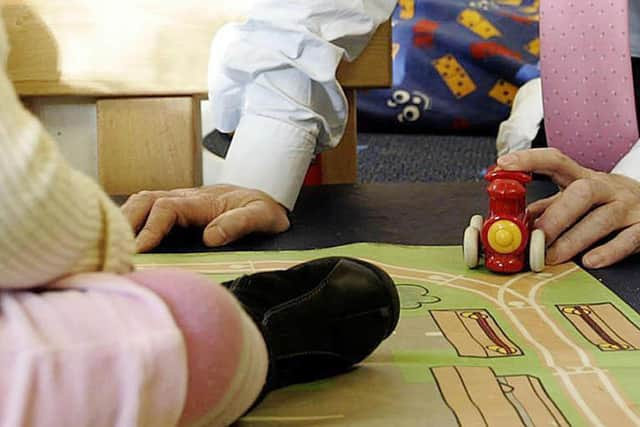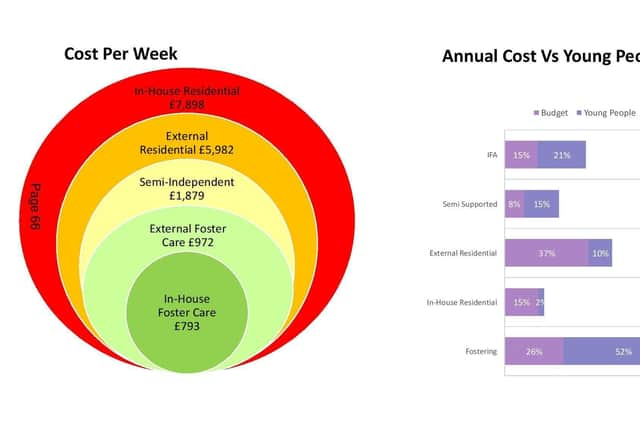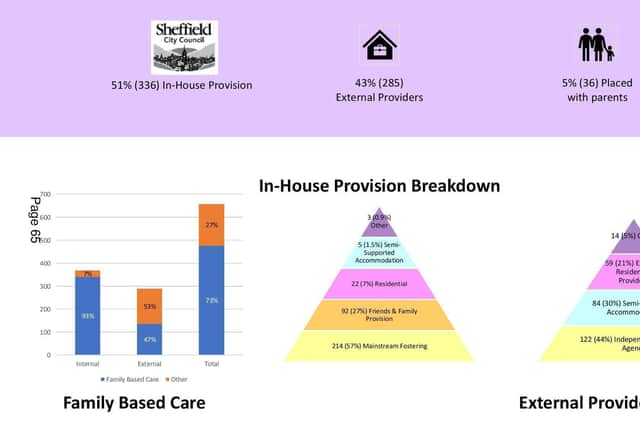Action plan to improve lives of Sheffield children in care system
and live on Freeview channel 276
The council’s education, children and families policy committee will discuss the plan at its next meeting on November 2. This looks at how the council acts in its role as ‘corporate parent’ to around 660 children and young people who are in care at any one time in Sheffield.
The report says the proportion of looked-after children who are unaccompanied asylum seekers has increased from one per cent in 2020 to 10 per cent in 2023.
Advertisement
Hide AdAdvertisement
Hide AdThe aim of the strategy is to provide the right number and type of homes for children and young people in the council’s care. It says that children will stay at home when it is safe to do so and will be reunited with their family when it is safe.


If they cannot stay at home, children and young people should live with people who they are already connected to, called connected carers. If not, they should live in family-based care such as adoption or fostering and if that is not possible, the council has to provide high-quality residential placements that meet their specific needs.
Currently, 73 per cent of children supported by the council service live in family-based care.
Providing more council-run placements in Sheffield will help children maintain links with people who are important to them as well as save the council money on sending children to expensive specialist care facilities outside the city, the strategy states. In total, 51 per cent of children live in council-provided care.


Advertisement
Hide AdAdvertisement
Hide AdThe law also states that children should stay in the city as far as is possible. The strategy report says that 37 per cent of children are placed outside the city but 75 per cent of young people live within 20 miles of their home.
The placement budget for 2023/24 is £40.7m, with a further £14.7m budget for in-house residential provision, including Aldine House secure children’s centre in Dore.
An investment programme is planned to “develop suitably sized, good quality internal residential homes to meet the needs of Sheffield children”.
The strategy says it will explore better ways of supporting connected carers, empowering families to overcome problems before they escalate and cause placement breakdowns.


Advertisement
Hide AdAdvertisement
Hide AdIt will “continue our relentless approach to foster carer recruitment, strengthening high-quality foster carer capacity in Sheffield that meets Sheffield children’s needs”.
It aims to ensure that an overnight respite offer is in place that is meets the needs of children with disabilities, who make up 14 per cent of the group.
Short breaks are also being looked at to ensure they meet the needs of young people and families.
The strategy is seeking to ensure that all placements meet the needs of the child, minimising the number of moves that a child might experience. Increasing the number of supported lodgings that are available would allow unaccompanied asylum seeker children young people to have the opportunity to live in family environments.
Advertisement
Hide AdAdvertisement
Hide AdWork is also being put in place with adolescent looked-after children and care leavers to ensure that they are supported in their transition to independence in adulthood through providing semi-supported accommodation and linking up with housing services.